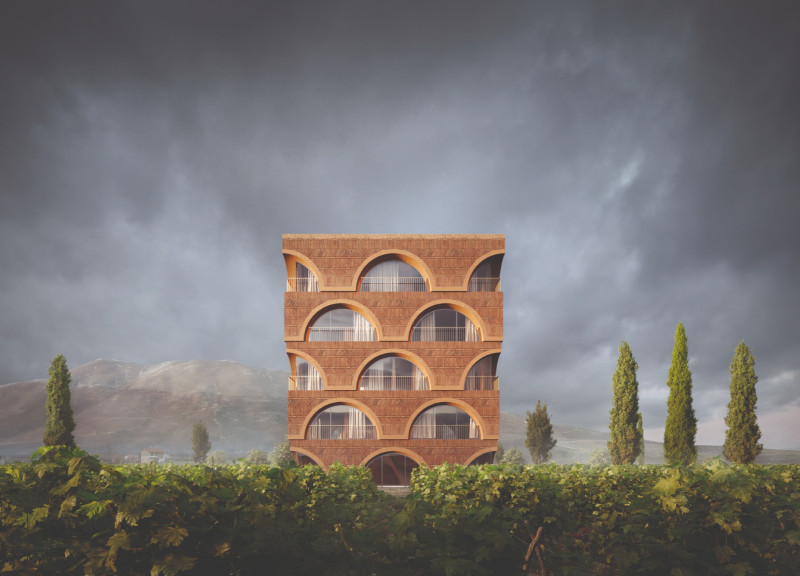5 key facts about this project
The project consists of a series of guest apartments and communal spaces, arranged to optimize views of the vineyards while ensuring privacy for each unit. The spatial organization reflects the principles of openness and interaction, with common areas strategically located to encourage social engagement among guests. Each apartment features an open-plan layout, facilitating a seamless transition between indoor and outdoor settings through large glass façades and private balconies.
Sustainable Material Use and Innovative Design Approaches
One of the distinguishing features of the Tili Wine Guest Homes is its emphasis on sustainable design practices. The architects utilized recycled bricks from local buildings to construct the façade, which not only reduces waste but also ties the project to the cultural history of the area. This approach serves a dual purpose: it minimizes environmental impact and fosters a sense of place, resonating with the locality's tradition of craftsmanship.
The design incorporates clay walls, providing excellent thermal insulation and contributing to the structure's overall efficiency. The use of expansive glass openings is intentional, allowing natural light to penetrate interior spaces while framing views of the surrounding vineyards. This design choice creates an inviting atmosphere and enhances the overall guest experience.
Functional Layout and Integrated Architectural Elements
The functional layout of the Tili Wine Guest Homes is designed to accommodate various guest needs, balancing communal and private spaces. The architectural plans include a central tasting room that serves as a focal point for communal gatherings, while the individual units maintain a sense of seclusion. This arrangement supports social interactions without sacrificing personal comfort. The communal areas feature long tables and comfortable seating, designed for shared experiences among guests, while the guest apartments include amenities that offer a home-like ambiance.
Key architectural elements include the layered façade, evoking the image of drying grapes, which visually connects the building to the local agricultural practices. Archways and repetitive forms are incorporated throughout the design, providing rhythm and harmony to the overall structure while also facilitating airflow and enhancing natural ventilation.
For those interested in a deeper examination of the project's specifics, including architectural plans, sections, and varied design elements, exploring the project's presentation will reveal further insights into the intricate architectural designs and ideas that comprise the Tili Wine Guest Homes.


























